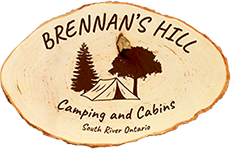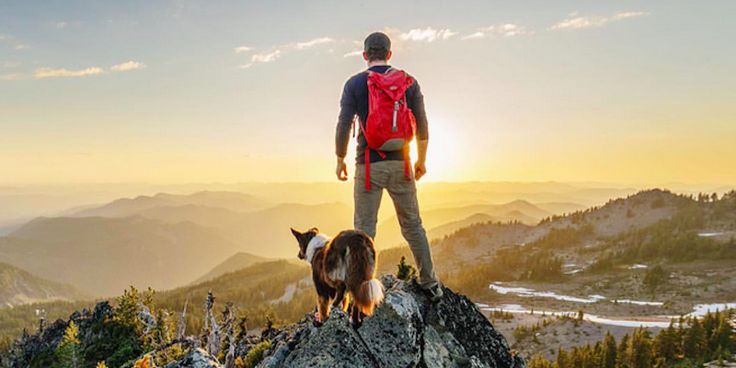Camping with your dog can be an incredible bonding experience, full of adventure, fresh air, and exploration. However, before you head out into the great outdoors, it’s important to make sure that your dog is properly trained for a camping trip. Preparing your dog for camping adventures will help keep them safe, reduce stress, and ensure an enjoyable experience for both of you. In this guide, we’ll cover some essential training steps to get your dog ready for camping.
1. Basic Obedience Training
Basic obedience is key to having a successful camping experience with your dog. Commands such as “sit,” “stay,” “leave it,” and “here” are crucial when navigating an environment full of potential distractions. Practice these commands regularly to ensure your dog responds well even when they’re excited or distracted.
Camping environments often come with many exciting sights, smells, and sounds, so it’s important to know that your dog will listen to you, even with distractions around. Be sure to practice commands in different environments, such as parks, trails, or other outdoor areas, to prepare your dog for the unpredictable setting of a campsite.
2. Leash Training
Proper leash training is essential when camping, as many campgrounds require dogs to be kept on a leash at all times. Even if the rules are more relaxed, keeping your dog on a leash helps protect them from wildlife and other potential hazards.
Work on having your dog walk calmly beside you without pulling. Practice with a standard leash as well as a longer lead, which gives them some extra freedom while still maintaining control. A hands-free leash can also be helpful for hiking, as it allows you to walk more comfortably while still keeping your dog close by.
3. Socialization
Campgrounds are often bustling with activity, including other campers, children, and other dogs. Proper socialization is vital to ensure your dog feels comfortable and behaves well around unfamiliar people, pets, and sounds.
If your dog is not used to being around other dogs or people, start by gradually introducing them to these situations. Visit parks, dog-friendly cafes, or other public areas to help them become more familiar with different environments. A well-socialized dog will be more at ease and less reactive during a camping trip, making the experience more enjoyable for everyone.
4. Crate and Boundary Training
A crate or portable kennel can be an essential tool while camping. It provides your dog with a safe space to rest and helps keep them contained during times when you can’t provide full supervision. Crate training your dog at home will ensure that they view the crate as a comfortable and secure place, making it much easier to use during your camping trip.
Boundary training is also important if you plan to give your dog some freedom at the campsite. Teaching your dog to respect boundaries, such as staying within a certain area or coming back when called, helps prevent them from wandering off. Set up an area in your backyard and train your dog to stay within its limits—this will translate well when you are at the campground.
5. Desensitization to Outdoor Elements
Camping means dealing with a variety of natural elements—from campfires and lakes to unfamiliar smells and wildlife. Desensitizing your dog to these elements beforehand can help prevent anxiety and fear during your trip.
Start by introducing your dog to different outdoor environments. Take them to parks, wooded areas, and lakes to get them used to different sights and sounds. If you plan to have a campfire, safely introduce your dog to the sight and smell of a fire in a controlled setting. Familiarity with these elements will help your dog remain calm and confident while camping.
6. Practice Quiet Time
Not every part of a camping trip will be full of activity—there will be times when you need your dog to relax and settle down, such as during meals or while sitting around the campfire. Teaching your dog to settle on command is extremely useful in these situations.
Practice having your dog lay on a mat or in their crate for quiet time at home. Use treats and praise to reward calm behavior. This will help your dog understand that camping is not just about excitement but also about relaxing and enjoying the peace of nature.
7. Recall Training
Reliable recall is one of the most important skills for a camping dog. If your dog gets off-leash or wanders away, you need to be sure they will come back when called. Practice recall regularly using high-value treats, toys, or praise as rewards. Start in a controlled environment, such as your backyard, and gradually work up to more challenging locations like parks or trails.
Using a long training lead can be helpful for practicing recall while giving your dog some freedom to explore. Make sure to use a consistent recall command, such as “here” or “come,” and always reward your dog when they respond, even if it takes a little longer than you’d like.
8. Getting Comfortable with Camping Gear
Camping often involves gear that your dog may not be familiar with, such as tents, sleeping bags, and backpacks. Before your trip, set up your tent in the backyard and let your dog explore it. Practice having your dog lay down in the tent to help them become comfortable with the space.
If you’re using a dog-specific sleeping bag or mat, introduce it to your dog ahead of time so they can get used to it. The more comfortable your dog is with the camping gear, the smoother the trip will be.
Conclusion
Training your dog for camping adventures takes time and patience, but it’s well worth the effort. A well-trained dog will be safer, more relaxed, and more enjoyable to have along on your camping trip. Focus on basic obedience, leash skills, socialization, and desensitization to outdoor elements to prepare your dog for the adventure ahead. By taking the time to properly train your dog, you can create an unforgettable camping experience that both you and your furry friend will treasure for years to come.










